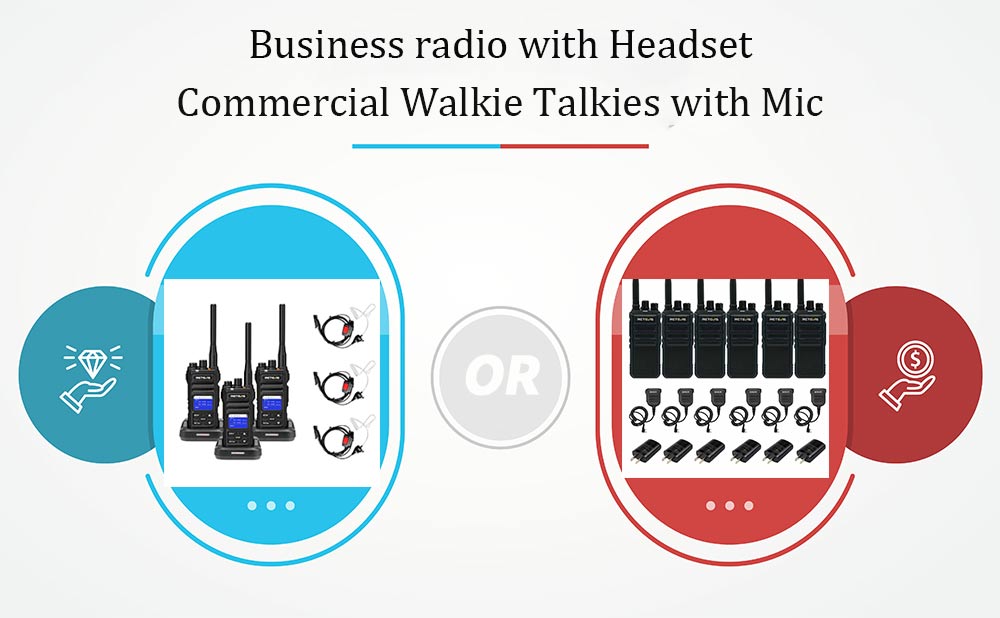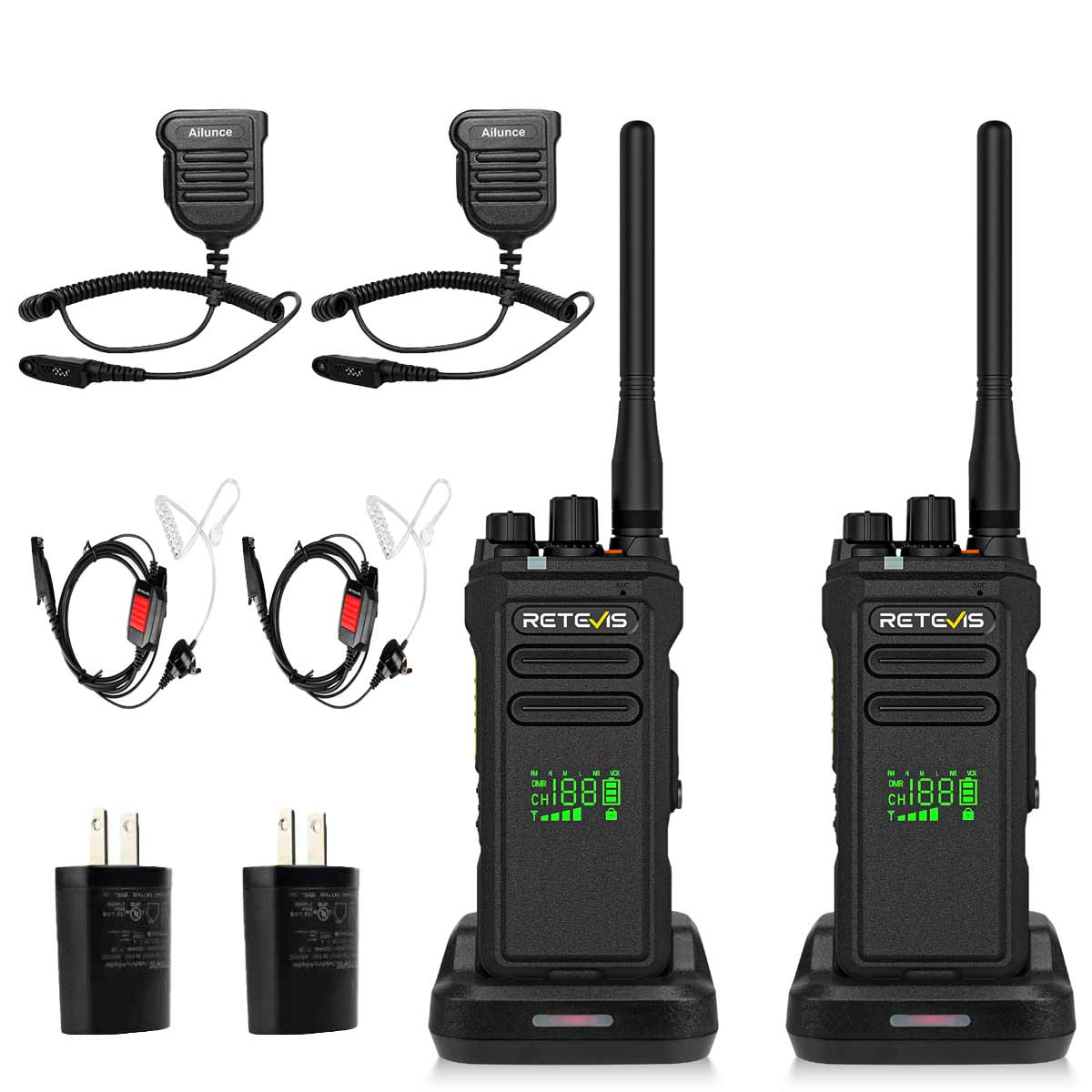How should you choose a walkie-talkie kit with a headset or microphone?

How should you choose a walkie-talkie kit with a headset or microphone?
- Sunny
- commercial walkie talkie with mics, commercial two way radio with earpieces, long range business radio kit
The use of walkie-talkies with microphones and headsets not only improves communication quality and efficiency, but also enhances user experience and privacy protection. The addition of these accessories makes walkie-talkies more widely and efficiently used in teamwork, safety and security.
But they both have their own advantages, here are some different advantages of the two.
1. Advantages of microphone (shoulder mic)
Improve the quality of communication:
Microphone as the intercom input device, its performance directly affects the capture of voice signals. High-quality microphone can clearly capture and transmit sound to ensure that the content of the communication is accurately conveyed.
Easy to operate:
Walkie talkie microphone is usually equipped with PTT (call button), the user can easily control the start and end of the call through the button, easy and fast operation.
Adapt to a variety of environments:
According to different environments and uses, you can choose different types of microphones, such as lavalier, handheld, etc., to adapt to the needs of various work scenarios.
2. Second, the advantages of the headset
Keep the call private:
Headset use can prevent the call content is heard by the surrounding people, thus protecting privacy and avoiding information leakage. This is particularly important in communication occasions that require confidentiality.
Reduce noise interference:
Headset can reduce the interference of environmental noise on the call, improve the clarity of the voice signal, so that communication is smoother.
Free hands:
After using the headset, the user does not need to hold the walkie-talkie to make a call, thus freeing his hands for other operations or work.
Enhanced user experience:
Headsets are often ergonomically designed to be comfortable to wear and not fatiguing to use for long periods of time. Headsets also provide clear sound quality and volume control, further enhancing the user experience.
3. Adapt to multiple wearing styles:
According to personal preferences and usage needs, headphones can be selected from a variety of wearing styles, such as in-ear, ear-hanging, headband, etc., to meet the usage habits of different users.
Each applicable environment
The walkie-talkie combination with headset and the walkie-talkie combination with microphone have their own applicable environments. The following is a detailed analysis of the two combinations of applicable environments:
Commercial walkie-talkie with headset
Walkie-talkie combinations with headsets are better suited for environments that require covertness, noise reduction, or two-handed operation.
Concealment: The use of a headset prevents the sound of the walkie-talkie from leaking out, and is suitable for occasions where concealment is required, such as important defense and surveillance missions.
Good noise reduction: The combination of walkie-talkie equipped with noise reduction headset can reduce the interference of background noise and improve the call quality in the noisy environment. For example, in high-intensity noise environments such as air ports, docks, construction sites, etc., the noise-canceling headset can significantly improve call clarity.
Two-handed operation: In certain working environments that require two-handed operation, such as driving a vehicle or operating machinery, the use of a headset can free your hands and improve work efficiency.
Business two way radio with microphone
Walkie-talkie combinations with microphones are more suitable for frequent calls, busy hands or special communication needs.
Frequent calls: In environments that require frequent communication, such as shopping malls, construction sites, retail stores, etc., a walkie-talkie combo with a microphone makes it easier to make calls and increase productivity. Microphones are often designed to be more portable and durable for extended use.
Busy hands: In work environments that require both hands to operate, such as construction sites, factory floors, etc., the use of microphones can reduce the burden of handheld radios, so that both hands can be more free to operate other tools or equipment.
Special communication needs: In some special communication needs occasions, such as emergency rescue, security, etc., with microphone walkie-talkie combination can provide a more reliable communication experience. For example, dual microphone technology can be applied to the microphone to improve call quality in noisy environments.
Conclusions
Consideration, when choosing a walkie-talkie combination with a headset or microphone, other factors need to be considered, such as the communication habits of team members, the portability of the walkie-talkie, and call quality. For example, if you need to wear the headset for a long time, you can choose a more comfortable headset; if you need to move and talk frequently, you can choose a lightweight microphone with good call quality.
To summarize, the walkie-talkie combination with headset is more suitable for the environment that needs concealment, noise reduction or two-handed operation; while the walkie-talkie combination with microphone is more suitable for the occasions that need to talk frequently, have busy hands or special communication needs. In actual application, the most suitable walkie-talkie combination should be selected according to specific needs and scenes.








